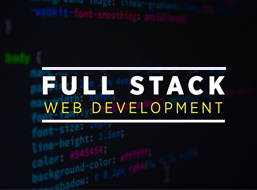Table of contents:
|
1. Understanding the Starting Point: Why Sketch Was Always a Great Tool |
|
2. Why the Shift to Figma Makes Sense: Figma Benefits You Should Know |
|
3. How to Plan the Migration: Sketch to Figma Workflow |
|
4. Common Challenges and Tips (from the classroom) |
|
5. Why This Matters for Someone Taking a UI UX Design Course in Bangalore |
|
6. Final Thoughts |
|
7. Frequently Asked Questions (FAQs) |
When we talk about design tools software in a modern UI/UX workflow, the shift from using Sketch to adopting Figma is no longer optional; it’s strategic.
As a trainer at Apponix, I’ve guided many UI/UX professionals through this transition, and I want to share how you can move from Sketch to Figma smoothly, what the real benefits are, and why this matters if you’re pursuing a UI UX design course in Bangalore or simply up-skilling in design.
Understanding the Starting Point: Why Sketch Was Always a Great Tool

Sketch has served the design community well for years, thanks to its intuitive vector editing, Mac-native performance, and deep plugin ecosystem.
Designers who worked primarily on macOS found Sketch a go-to for interface design and prototyping. Its ability to create symbols, artboards, and exports for mobile apps puts it ahead of general tools like Photoshop for UI design.
However, the model of Sketch has some limitations today: Mac-only, local files, and less emphasis on real-time collaboration or cross-platform accessibility.
Why the Shift to Figma Makes Sense: Figma Benefits You Should Know
When we introduce Figma in our classroom, we highlight these advantages:
-
Platform independence & collaboration: Unlike Sketch, which is macOS-only, Figma runs in the browser or on desktop on Windows/macOS, enabling teams across devices to collaborate in real-time.
-
Cloud-based workflow: Files live in the cloud, versioning is built in, and sharing links for prototypes and designs is seamless.
-
Importing legacy designs from Sketch to UI design in Figma: Figma supports importing .sketch files, keeping layers, artboards and symbols/converted components intact, to help you migrate your existing work.
-
Speed and streamlined handoff: Developers can inspect designs directly, you can share live prototypes, and designers and product teams can edit simultaneously.
-
Future-proof ecosystem: With design systems, component libraries, and plug-ins growing rapidly, Figma powers workflows today and scales for tomorrow.
How to Plan the Migration: Sketch to Figma Workflow
In our Apponix training sessions, we follow a structured approach to migrating design tools software from Sketch to Figma. Here’s a breakdown of the steps we teach:
-
Audit your Sketch files
-
Identify all active files, artboards, and symbols.
-
Archive the obsolete ones.
-
Clean up naming conventions so they make sense going forward.
-
Import files into Figma
-
In Figma, choose Create > Import and select your .sketch file.
-
It will convert artboards to frames and symbols to components.
-
Note: Some styles (like Sketch styles) may not translate directly and may need re-creation.
-
After import, verify fonts, layouts, assets and alignments.
-
Re-establish your component library and styles
-
In Figma, convert repeated elements into components and publish them as a library.
-
Re-create text styles, color styles and effects so the system is consistent.
-
Update design system and workflows to Figma’s strengths
-
Encourage real-time collaboration: invite team members into the file.
-
Use Figma’s prototyping, commenting, and version history.
-
Set up sharing links for stakeholders for review.
-
Train your team / ensure adoption
-
Since we’re training at Apponix, we ensure every designer understands the tool shift: shortcuts, plugins, and file management differences.
-
Emphasize how to use Figma in cross-platform environments, remote teams, and global workflows.
-
Gradual rollout & legacy support
-
You don’t need to migrate everything overnight. Keep a hybrid state while transitioning.
-
Ensure that any new UI UX design course in Bangalore you’re enrolled in covers both tools briefly, but focuses on Figma moving forward.
Common Challenges and Tips (from the classroom)
During these migrations, I often see the following obstacles, and we address them proactively:
-
Missing fonts or styles after import: After importing from Sketch to Figma, you may see warnings like “Missing fonts”. In Figma, you’ll need to upload or replace fonts.
-
Large file sizes: Big Sketch files may fail to import. Best practice: break them into smaller files or optimise assets.
-
Plugin ecosystem differences: Sketch has a mature plugin library; while Figma’s is growing fast, you may find some plugins missing.
-
Offline work versus browser dependency: Since Figma is cloud-centric, working completely offline can be trickier. Plan accordingly if your team has intermittent connectivity.
-
Change management: Designers comfortable with Sketch might resist switching. Training, showing Figma benefits and using hands-on migration helps.
Why This Matters for Someone Taking a UI UX Design Course in Bangalore
If you’re enrolled in a UI UX design course in Bangalore, you’ll notice that employers increasingly look for proficiency in Figma.
When you market yourself with knowledge of design tools software, highlighting “migrated from Sketch to UI design in Figma” adds to your professional story.
At Apponix, our curriculum evolves to reflect industry needs, training you not only in basic UI/UX design but also in modern toolchains and collaborative workflows used by agencies and global tech firms. By mastering Figma, you position yourself as a designer ready to plug into today’s cross-functional product teams.
Final Thoughts
As a trainer at Apponix Training Institute in Bangalore, I’ve seen countless designers gain confidence and expand their career options once they embrace the migration from Sketch to Figma.
The move isn’t just a tool swap; it’s a mindset shift towards collaboration, scalability, and future-ready workflows. Whether you are already a seasoned Sketch user or are just beginning your UI/UX journey, understanding this migration enhances your value and opens doors to modern design opportunities.
In the design world today, proficiency in design tools software like Figma is increasingly seen as a baseline. But when you can say you understand both Sketch and Figma, you demonstrate flexibility and depth, traits that employers in Bangalore and beyond appreciate.
Here at Apponix, we guide you through this transition step-by-step, in our UI UX design course in Bangalore, so you don’t just learn the tool, you master how to integrate it into real-world projects, workflows, and teams.
By the end of our training, you’ll not only be comfortable using Figma, you’ll know how to work effectively in teams, manage design systems, and deliver UI designs with confidence. If you’re ready to upgrade your skills, migrate your toolset, and future-proof your design career, we’re here to support you.
Frequently Asked Questions (FAQs)
Q1: What exactly is meant by “design tools software”?
The term refers to software applications used for UI/UX design—creating interfaces, prototypes, design systems, icons, and layouts and collaborating with developers and teammates.
Q2: Can I still use Sketch if my team switched to Figma?
Yes, you can keep using Sketch for certain workflows. But for collaboration, cross-platform access or team environments, migrating to Figma brings significant advantages.
Q3: Does the migration from Sketch to UI design in Figma mean I lose my old work?
No. Figma supports importing Sketch files (.sketch) and keeps artboards, layers and symbols (converted to components). Some manual adjustments may still be required.
Q4: Will learning Figma in a UI UX design course in Bangalore help me find jobs?
Definitely, Employers are increasingly looking for designers who can collaborate, work with shared libraries, deliver prototypes and hand off designs efficiently—skills Figma is built for.
Q5: How long does it take to become proficient in Figma after using Sketch?
It varies depending on your experience level. Designers familiar with Sketch usually adapt quickly. A focused training institute like Apponix can help you ramp up in weeks.




